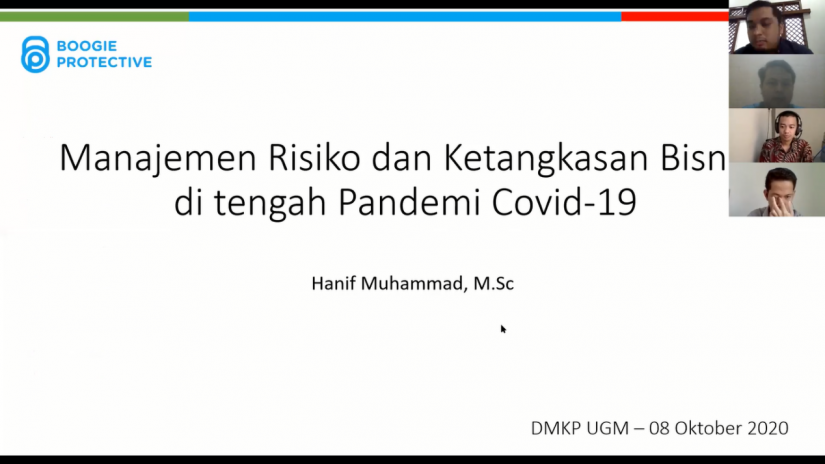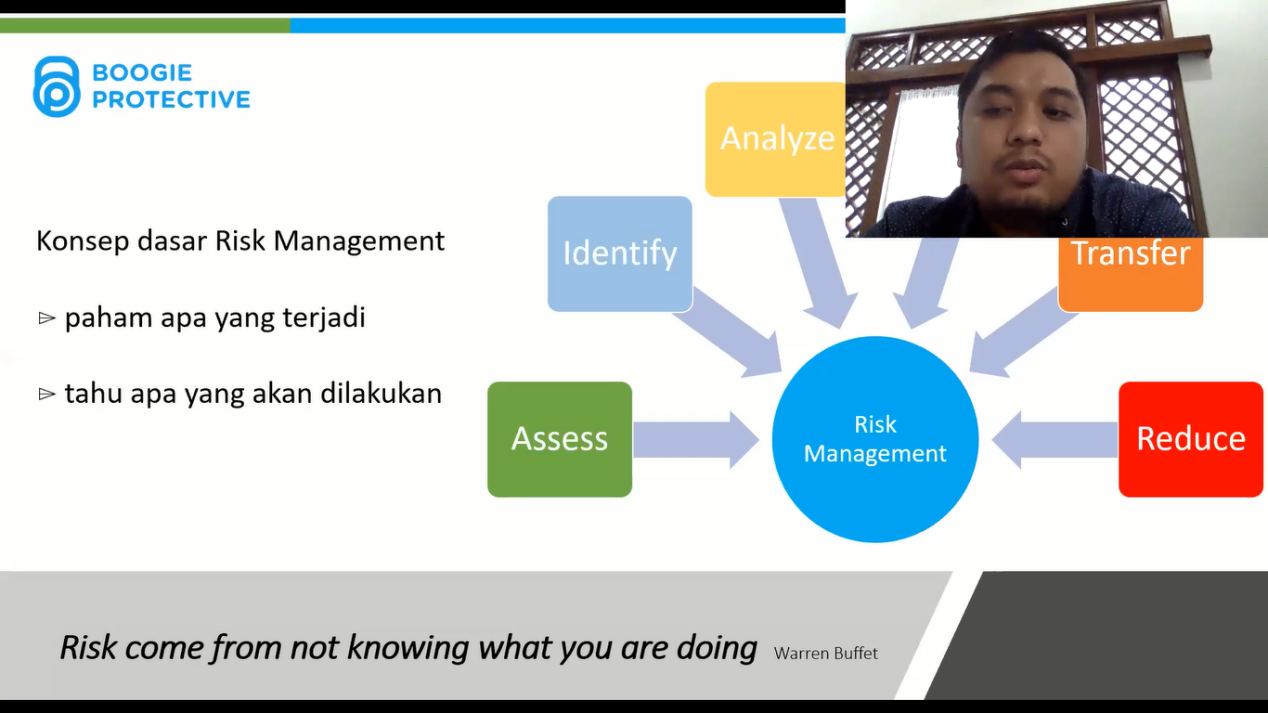
Yogyakarta, October 8th 2020 – The Public Sector Risk Management by the Undergraduate Program of the Department of Public Policy and Management held an open lecture. By presenting Hanif Muhammad, M.Sc. as the guest lecturer, this open lecture discussed specifically about Risk Management and Business Agility in Facing COVID-19. Other than being held according to the course hours—at 07.30 a.m., the discussion session with the speaker was also guided by one of the lecturers in the Public Sector Risk Management course, Media Wahyudi Askar, S.I.P, M.Sc., Ph.D. As the CEO of Boogie Protective and Head of INDEF Center for Innovation and Digital Studies, Hanif combines existing theory with the experience he had had, both from a personal and corporate point of view. However, before entering into the presentation of the material from the guest lecturer, Media as the moderator read out the CV which Hanif responded directly to as a form of introduction to the participants.
For the beginning, Hanif shared about his company’s background, the actions he and his team took in response to policies in the midst of a pandemic, as well as life-changing turning points and his perspective regarding company management during a pandemic. From this turning point, he felt that he had to step in to deal with the pandemic in his capacity, even though this step had its own risks. Therefore, risk management is necessary. Hanif realized that life is inherently risky. So, if the business does not dare to take risks, the business will not survive. However, if these risks are not managed properly, failure and destruction can also occur.

According to Hanif, the choice is not to eliminate the risks, but to manage them. Hanif then explained that risk management has two very simple basic concepts, they are understanding of what is happening and knowing what to do. To understand what risks are faced, three ways are needed, namely assess, identify, and analyze. These three ways can be done by conducting research from various sources such as podcasts and news. Finding sources of information broadly helps to understand the strategic environment and the business to operate in a larger context. Because unexpected things will always happen and cannot be avoided, Hanif explained that in managing risk, it is necessary to always do what is in control and look up for open windows.
From there, small steps can be taken and repeated until the most effective strategy is found. This process can be done using agile methodology, a strategy that highlights the small details that can be significant factors for change. When various strategies have been pursued, each strategy can be proportioned to its respective scale according to the resulting effectiveness. Hanif also did not forget to explain that it is important to collaborate with other parties, embark on leadership internally, reduce risks that can overwhelm the mind, and think about sustainable efforts. “Pandemic conditions, crisis conditions like this can really train to manage real risks. This is because it is the urgent condition that makes us think more, look for solutions and alternatives,” Hanif said before closing his explanation with a book recommendation. In his explanation, Hanif always complemented his explanations with real examples—experiences he and the team had had so far.
After summarizing Hanif’s entire explanation, Media invited the lecture participants to respond, ask questions, and share their experiences as well. Several lecture participants actively asked questions and gave responses, which Hanif answered and responded. “Risk management must be trained. Create risks in order to see new opportunities,” Hanif said as the closing of the open lecture of Public Sector Risk Management course.
